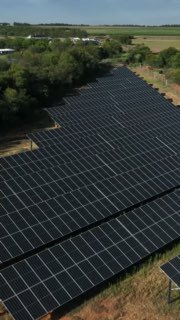Orania, a small town in South Africa, is making strides towards energy independence from the country’s main electricity provider, Eskom. The town, predominantly inhabited by Afrikaners, has been dealing with high electricity costs and frequent blackouts for years. In response to these challenges, community leaders have taken initiative to establish their own energy sources.
Eskom, South Africa’s primary electricity provider, has been struggling with rolling blackouts since 2008, causing major disruptions and inconveniences for residents. Additionally, the high cost of electricity has been a burden on the local economy, draining capital that could be used for other projects and investments.
To combat these issues, Orania has recently constructed a solar power plant and implemented battery storage systems to generate and store electricity. The town’s council owns the plant and sells the generated electricity to residents at the same price as Eskom, in order to fund future expansion and projects. This strategy not only keeps money within the community but also allows for reinvestment in various initiatives, such as community housing for newcomers.
Moreover, in times of excess production, Orania is able to sell electricity back to Eskom at a profit, further boosting the town’s economic standing. This innovative approach has not only helped Orania achieve energy independence but has also created a sustainable model for other communities to follow.
By taking control of their energy sources, Orania has not only improved their own self-sufficiency but has also set an example for other towns and cities in South Africa facing similar challenges. The success of Orania’s energy independence initiative highlights the importance of local solutions to national problems and the potential for communities to thrive with innovative and sustainable practices.

